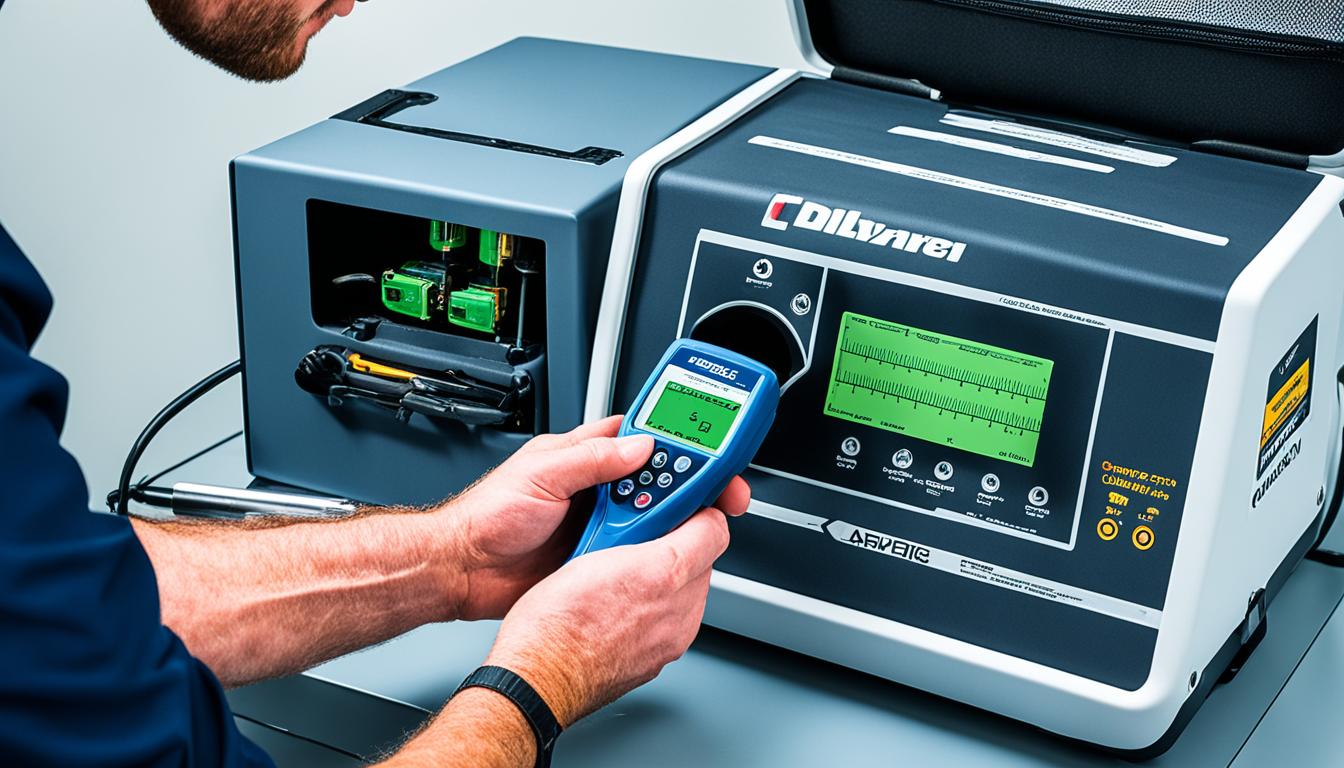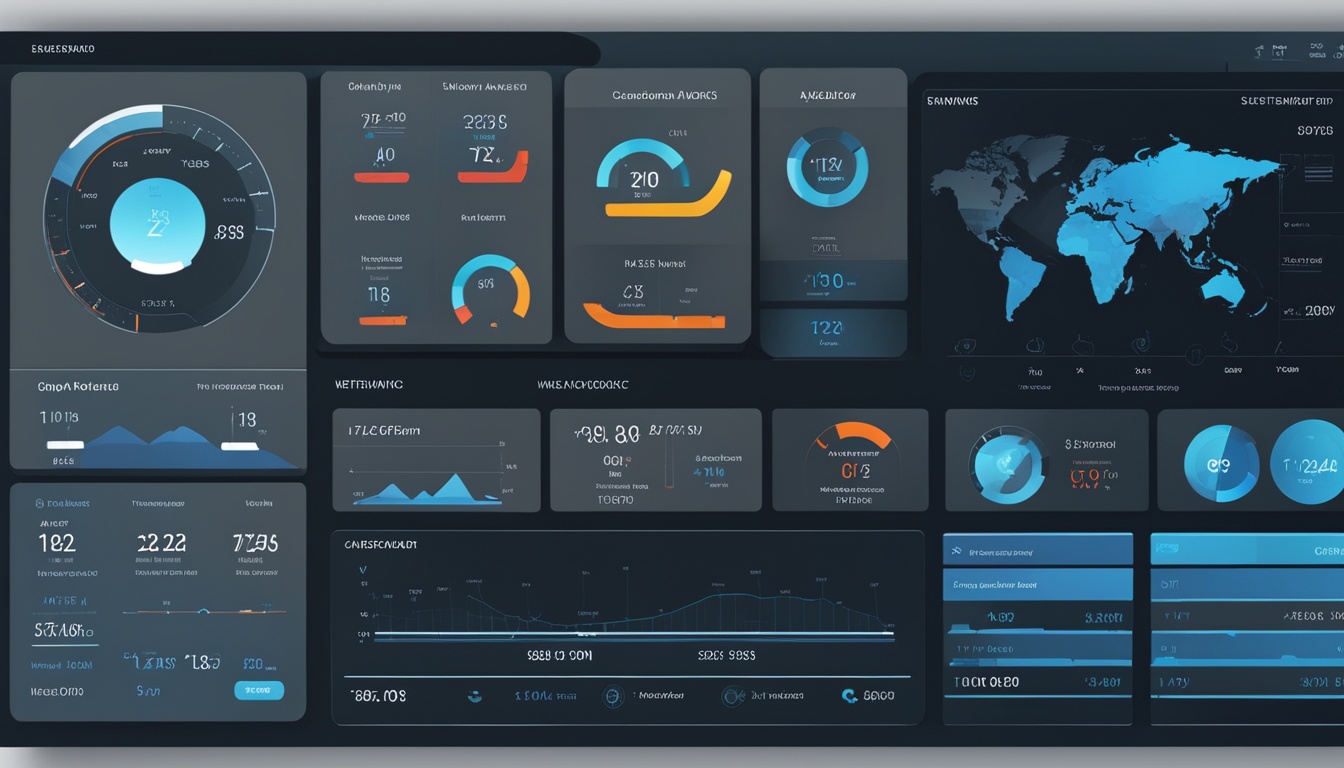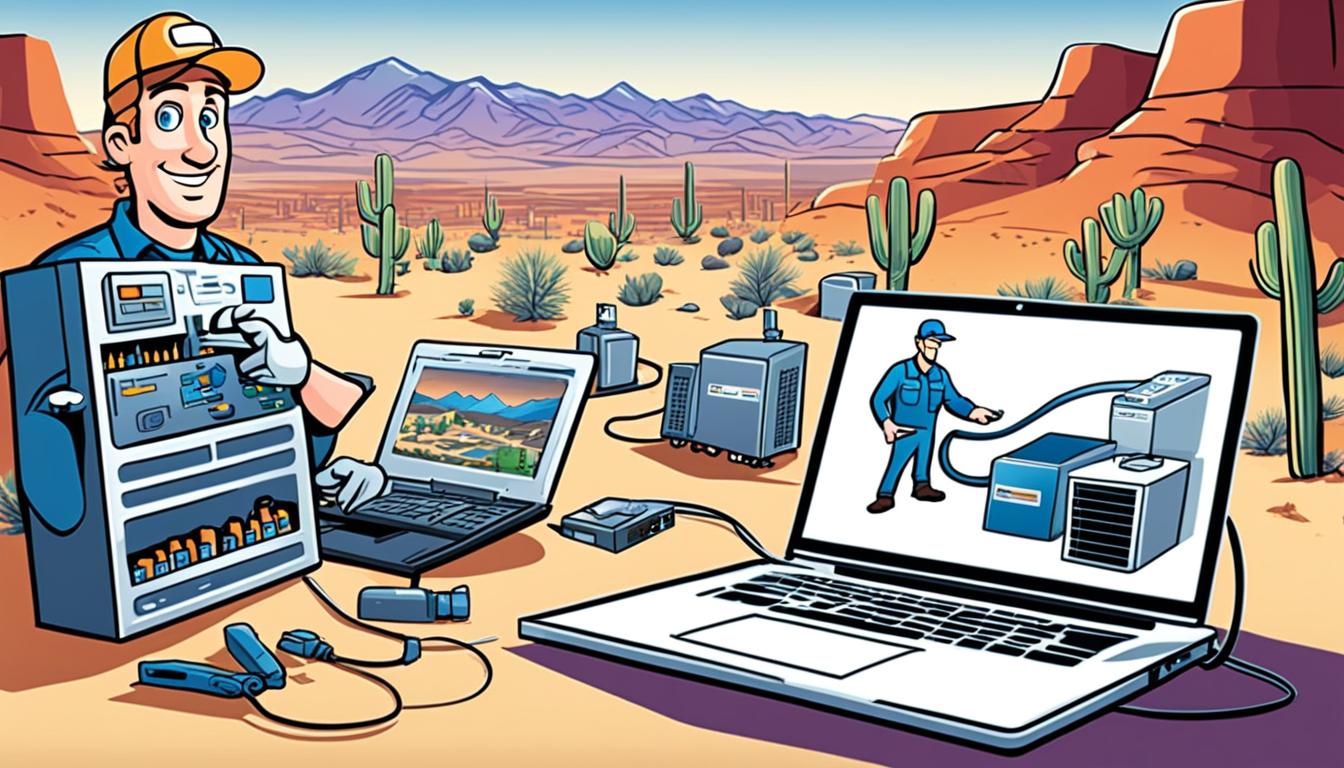Imagine this scenario: you’re in the middle of a hot summer day, working diligently to repair an air conditioning system. The temperature is soaring, and your clients are desperately waiting for relief from the sweltering heat. As you’re troubleshooting the system, you rely on your electronic leak detector to identify any gas leaks that may be compromising the efficiency and safety of the AC unit.
But what if your leak detector hasn’t been calibrated in months? What if it’s no longer as accurate as it should be, and you miss a critical leak that could cause further damage to the system? The consequences could be costly, not just for your clients but also for your reputation as a trusted AC repair contractor.
Calibrating electronic leak detectors is a crucial step in ensuring optimal performance and accuracy. It’s the key to detecting leaks effectively and preventing potential disasters. Let’s explore the recommended calibration frequency for electronic leak detectors and why it’s essential to adhere to this best practice to safeguard the efficiency and safety of your AC repair projects.
Key Takeaways:
- Regular calibration of electronic leak detectors is crucial for optimal performance and accuracy in detecting gas leaks.
- The recommended calibration frequency for electronic leak detectors is typically every 6 to 12 months.
- Calibration should be performed by qualified technicians using appropriate tools and procedures.
- Professional leak detector calibration services are available to ensure the accuracy and reliability of electronic leak detectors.
- By adhering to the recommended calibration frequency, contractors can have confidence in the performance of their electronic leak detectors and ensure the safety and efficiency of their projects.
Factors influencing the calibration frequency of electronic leak detectors
The calibration frequency for electronic leak detectors can be influenced by various factors. It is important to understand these factors in order to develop a calibration and maintenance schedule that ensures accurate and reliable performance.
Type of Sensor
The type of sensor used in the electronic leak detector is a significant factor in determining the calibration frequency. Different sensors have varying levels of sensitivity and may require more frequent calibration to maintain optimal performance.
Fixed or Portable Detector
Whether the electronic leak detector is fixed or portable can also impact the calibration frequency. Portable detectors that are exposed to different environments and conditions may require more frequent calibration to ensure accurate readings.
Intended Application
The intended application of the electronic leak detector is another factor to consider. Detectors used in critical environments such as industrial facilities or healthcare settings may need more frequent calibration to ensure the safety and reliability of the equipment.
Level of Accuracy Required
The level of accuracy required for leak detection also plays a role in calibration frequency. If precise measurements are essential for a particular application, more frequent calibration may be necessary to maintain the desired level of accuracy.
Manufacturer’s Recommendations
It is important to follow the manufacturer’s recommendations regarding calibration frequency. Manufacturers often provide guidelines and specifications based on their expertise and knowledge of their specific detector models.
Frequency of Use
The frequency of use can influence the calibration frequency of electronic leak detectors. Detectors that are used more frequently may require more frequent calibration to ensure consistent and reliable performance.
Environmental Conditions and Damage
The environmental conditions in which the detector operates and the occurrence of any physical or environmental damage can also impact calibration frequency. Harsh environments or physical damage can affect the accuracy of the detector, necessitating more frequent calibration.
Best Practices and Calibration Procedures
To ensure the accurate and reliable performance of electronic leak detectors, it is crucial to follow best practices and proper calibration procedures. This includes zeroing the sensor and using calibration gases in accordance with the manufacturer’s instructions. Adhering to these practices can help maintain the optimal performance of the detector.
By considering these factors and following best practices for calibration, contractors can ensure that their electronic leak detectors are calibrated at the appropriate intervals, allowing for accurate and reliable leak detection.
Benefits of regular calibration for electronic leak detectors
Regular calibration of electronic leak detectors offers several important benefits. Accurate calibration ensures the reliability and accuracy of the detector’s readings, enabling the detection of gas leaks with precision and confidence. By calibrating your leak detector on a regular basis, you can trust that it will provide you with accurate results when you need them the most.
Moreover, maintaining the sensitivity and responsiveness of the leak detector is crucial for effective leak detection. Regular calibration helps to keep the detector’s sensors fine-tuned, ensuring that it can detect even the smallest leaks and provide timely alerts. This is particularly important in environments where gas leaks can have serious consequences, such as industrial facilities or residential areas.
Another significant advantage of regular calibration is the ability to prolong the lifespan of the detector. Through the calibration process, potential issues or malfunctions can be identified early on. This allows for prompt maintenance or repair, preventing more severe problems down the line. By prioritizing regular calibration, you can protect your investment in the leak detector and ensure its long-term performance and reliability in your projects.
To ensure optimal performance and safety, it is essential to adhere to the recommended calibration frequency and follow proper calibration procedures. By doing so, contractors can have confidence in the accuracy of their electronic leak detectors, allowing them to enhance the safety and efficiency of their AC repair projects. By prioritizing accurate leak detector calibration and following best practices for calibration, contractors can minimize risks, save time, and provide reliable and thorough leak detection services to their clients.





0 Comments